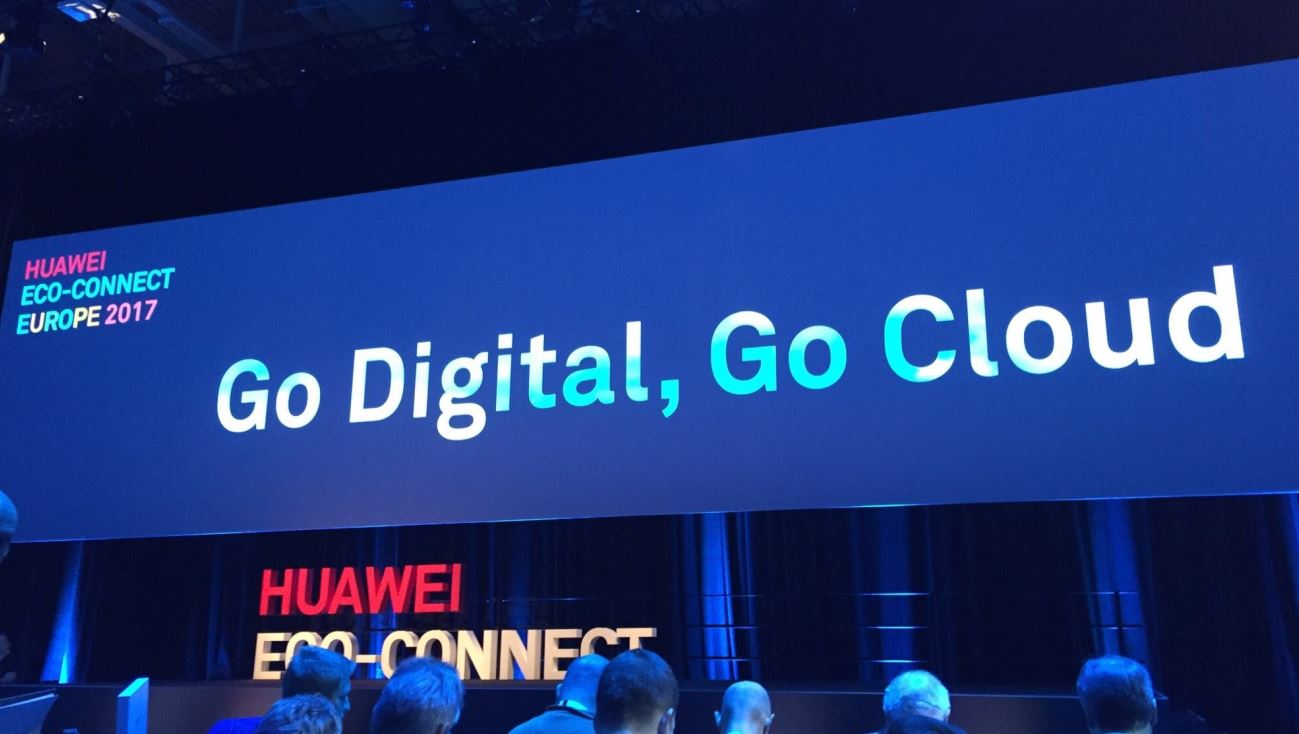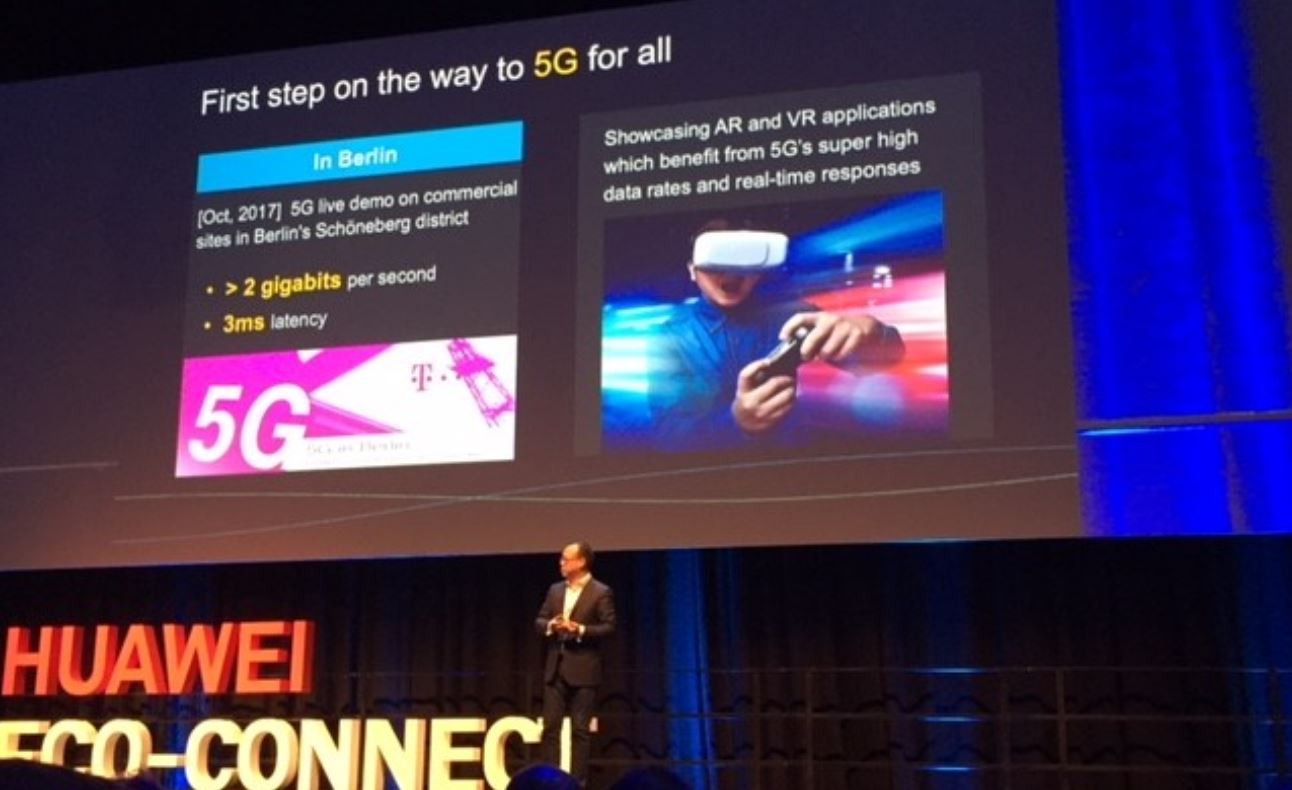
Web Developers
FGRT’s London team attended the second annual Huawei Eco-Connect Europe event in Berlin last week. Huawei, a Chinese electronics and telecoms hardware firm, uses the event to showcase its business-to-business technologies to analysts, experts and the media. Our team focused on the retail technologies that were presented at the event.

Van Geest made the following observations:

Source: FGRT
Digitalizing Physical Stores
On the first day of the event, we attended a presentation announcing the launch of Huawei’s European digital retail services offering, which is designed to help retailers digitalize their physical stores. Jeff Jiang, SVP at Huawei, noted that stores need to be transformed for “New Retail” and that retailers can deploy technologies such as RFID, the cloud, mobile payments, virtual reality and augmented reality to digitalize physical stores. By partnering with established, specialized technology firms, Huawei will offer the following services to European retailers:- Electronic shelf-edge labeling, in partnership with Century. Electronic labels allow retailers to change in-store prices rapidly, without the labor costs associated with replacing each label manually.
- Smart screens, in partnership with OnTime Technology. These screens use sensor tags attached to products to show product details on-screen and enable shoppers to buy the products, including via mobile payment. OnTime implemented this technology at an inventoryless Alibaba pop-up store, where shoppers could buy products for home delivery. Huawei did not state what technology was used for this offering at the presentation, but OnTime’s website promotes a similar product that uses RFID tags.
- A number of RFID-driven services, in partnership with Keonn Technologies. These include inventory management using RFID-reading robots and handheld scanners, RFID-detecting shelves that can identify the presence of products, and fitting-room screens that offer RFID integration.
- Further RFID services, focused on tracking and managing goods and people, in partnership with CipherLab Europe. These enable users to track products and people in stores, in distribution centers and on the road.
- Security gates at door entrances make customers feel that they are suspects.
- Seeing shoppers queuing deters people from entering a store. Some stores put checkouts at the back of the store, but that simply displaces, rather than solves, the problem.
- Stores have been growing in size and new products are coming into stores fast—that means it takes shoppers more time to find products.
- Out-of-stock means that products are not available when consumers want to buy them.
- Information barriers, such as difficulty in finding out if a product is the one a shopper wants and difficulty in finding technical information, are a problem.
- Fitting-room inconveniences, such as needing alternative choices or sizes, make shopping more difficult.
- Once a shopper has decided to buy, queues may be too long.
- Have a single view of the customer, inventory and products.
- Enable purchase, fulfillment and returns anywhere.
- Sell through any medium—from social media to voice commerce.
- Tap segments such as millennials and growing middle classes in some regions.
- Aim for an “audience of one”—in other words, hyperpersonalization.
- Use the store as a point of service with empowered associates.
- Leverage data with predictive analytics and artificial intelligence.
- Make every process faster, including microprocesses.
- Adopt new business models, such as 3D printing, rental, subscription and mass customization.
- Adopt business and technological agility.
Notes from the Keynote Addresses
We conclude by noting some observations made by Vincent Pang, President of Huawei’s Western European Region, and Yuri Van Geest, Founder of Singularity University, in their keynote addresses that kicked off the Huawei event. Pang noted the following:- In 20 years’ time, “everything” will be connected to the Internet. As a result, the Internet of Things (IoT) is a hot topic in every industry.
- 5G connections will allow IoT connections to function at speed. Huawei launched commercial trials of 5G in Berlin in the past few weeks.
- Augmented reality and virtual reality will be among the technologies benefiting from the speed of 5G connections.
- Digitalization is impacting almost every industry, from domestic energy supply to automobile manufacturing.
- Huawei has six “domains” to serve the shifts in industry: cloud computing, IoT, big data and artificial intelligence, mobile marketplace, video, and communication. The company is launching OpenLab innovation centers that conduct innovation research and testing in collaboration with partner firms. In 2016, Huawei opened its first OpenLab in Munich. In two weeks, it will open its next center in Paris and in 2018, the format will come to London.
 Source: FGRT
Source: FGRT
Van Geest made the following observations:
- Exponential technologies are set to transform how we work and live. Such technologies include artificial intelligence, quantum computing, robotics, nanotechnology and neuroscience.
- Each of these technologies is (at least) doubling in capacity every 18 months: that means costs are halving every 18 months.
- There are three stages to the adoption of exponential technologies: people first “freak out,” then they adapt and finally learn to optimize the use of such technologies, with the sum of humans plus technologies giving the best results.
- Exponential organizations are those firms whose impacts are disproportionately large, around 10 times those of their peers. Such organizations are purpose driven—they want to do good for the world. And they put artificial intelligence at their core, which helps their scale: these firms use artificial intelligence for everything from product development to sales and marketing.
- Artificial intelligence is the core exponential technology—all others are secondary.